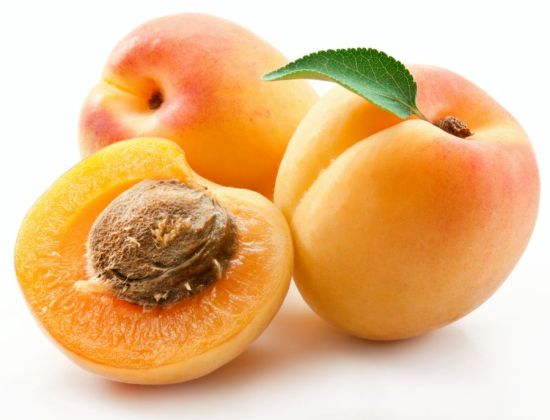


| Protein | 1.0% | Fat | 0.3% |
|---|---|---|---|
| Minerals | 0.7% | Fibre | 1.0% |
| Carbohydrate | 11.6% | Calcium | 20 mg |
| Phosphorus | 25 mg | Iron | 2.2 mg |
The Apricot is a stone fruit and has nut within it.it is yellowish in colour. The fruit which ripens on the tree alone develops its true flavour which is very much like that of Peach.
The Apricot is believed to have originated in china, where it has been cultivated for over 4,000 years.It has also been grown in India and Tibet.
The fresh fruit is rich in natural sugars,vitamin A and calcium. it is a good source of the vitamins, i.e.B Complex, riboflavin and niacin as well as vitamin C.
It contains 40 to 5 per cent of an oil which is practically identical with almond oil in its physical as well as chemical properties.
Throughout the centuries, the fruit, kernels, oil and flowers of the apricot have ben used in medicine.
The kernel, which yields an oil similar to that of the almond have been widely used for their sedative, antispasmodic that gives relief to strained muscles and demulcent or soothing properties They are useful in healing of wounds, in expelling worms and as a general tonic.
The apricot in its fresh form is used as a dessert fruit.It is, however, generally used in its dried form. The heat renders it easier to digest.
It is made into excellent jam, jelly, marmalades and preserves.
Apricots canned in sugar are also popular. The nut of the apricot is extensively used in confectionary.
Visit Our Twitter Account,follow on Facebook and Twitter
© 2016 Aayurveda Online. All rights reserved | Design by Adhyatmik